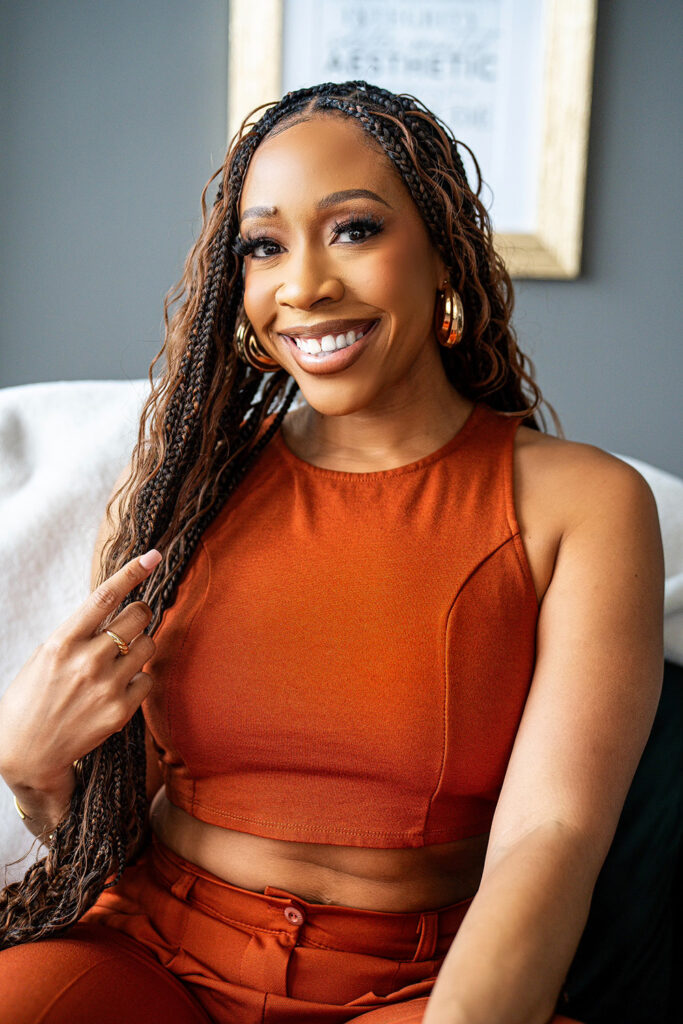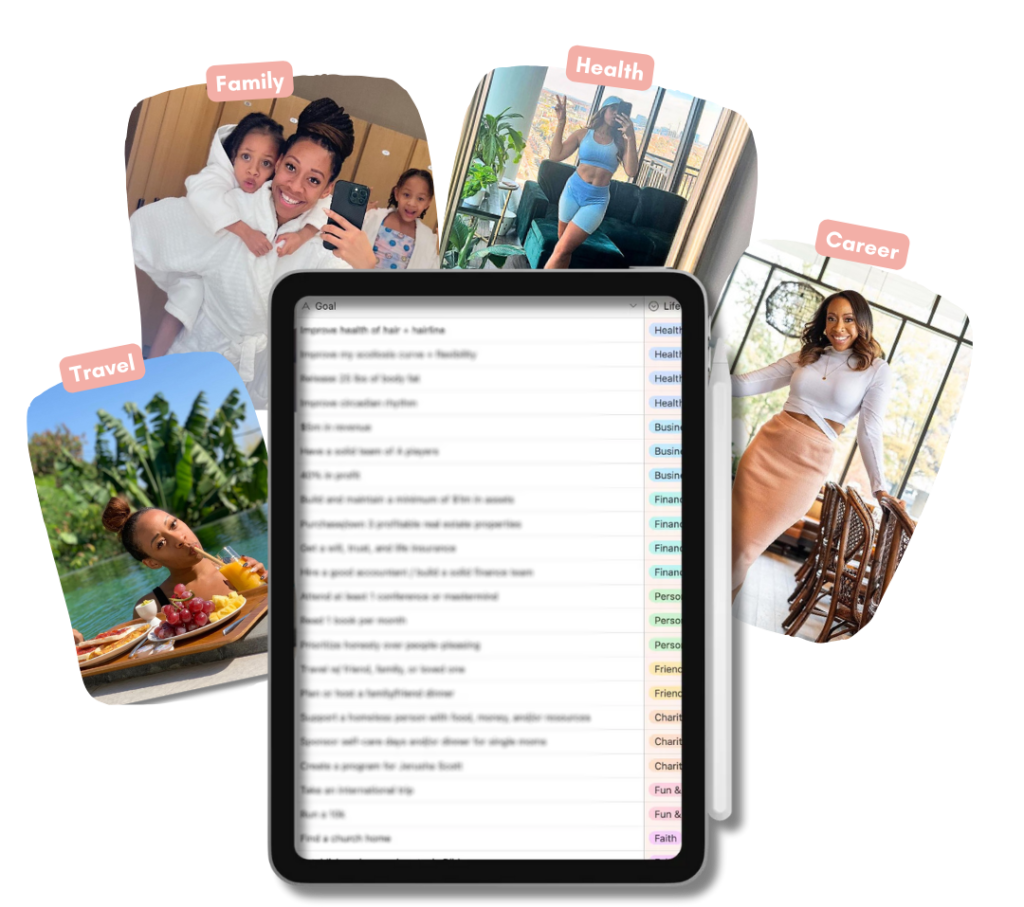
Do you know who your target audience is? If your answer is “everyone”, keep reading.
Before I embark on a design project, I ask my client who their target audience is. This gives me a general idea of the design style I will use when creating their marketing material. It’s a relief when my client can actually give me a detailed description of who their customer is.
Most times when people begin their business, they want their “target audience” to be everyone. When everyone is your target audience, there is no actual target.
If a photographer wants to cater to everyone, they must be able to photograph food, nature, pets, families, fashion models, music artists, products, etc.
If an event planners want to plan events for everyone, they must be able to plan baby showers, bachelor parties, anniversaries, engagement parties, birthdays for babies, birthdays for kids, birthdays for adults, etc.
[Tweet “You don’t need to offer everything to everyone to make money.”]
There’s an initial mindset that if you don’t offer everything, you won’t get every customer possible. Offering everything doesn’t mean that everyone will do business with you. It’s important to remember that while you “could” offer a wide range of things, you shouldn’t. Highlighting what you specialize in rather than trying to reel everyone in as a customer, works out better for your and potential customers in the end. Most clients wish to hire an specialist – someone who is highly skilled in a particular subject of their field.
Before getting into the meat of how and why we should find our niche and target market, we need to a.) acknowledge that they are two separate things and b.) define what each means.
A niche is the specialized product or service you offer to your ideal customer.
A target market (or target audience) is the ideal client or customer looking for what you have to offer.
In short, your niche is your very specific “what” while your target market is your very specific “who”. Once you identify one, you have a more clear understanding of the other. For most people, they decide on their what and then decide how would like it.
Find a specific group of people that you like working with and that like working with you. This eliminates wasting time and money by trying to market to a wide range of people who aren’t interested in your services (or who I’m not interested in servicing).
Narrow down what you do into what you do well.
Just because you may be a photographer doesn’t mean you photograph babies well. If you offer services that you don’t excel in, you increase the chances of giving yourself and your business a bad reputation. People don’t pay for mediocrity, so don’t offer it.
When you go from being a “Jack of all trades” to the King or Queen of your specialty, that’s when the real money begins to flow.
For a long time, I tried to convince myself that my niche was corporate marketing and design and my audience consisted of white males ages 45 and up. That couldn’t have been further from the truth! Looking back, I just laugh at the thought of it. Trying to market to someone who wasn’t part of my target audience meant no one was willing to pay for my services. When I finally became honest with myself, that’s when I began to notice a consistent flow of income. So how did I find my niche and target market? I looked at who my money was coming from and what they were purchasing.
Even at a glance, it’s quite obvious that my target market is NOT a white male. After I determined who (my target market), I pointed out the similarities in their personalities and acknowledged what they’re paying for. And that’s when I realized what my niche was. Each of these women wanted to help people through content such as speaking, workshops, books, etc.
My primary audience: African American women with college degrees ages 28 – 45 looking to monetize their personal brand through premium content.
My niche: Brand identity & website design for personal brands of African American Women. (Update 11/2/2015: Strategy coaching + informational products for content creators)
Note: Just because you attract a specific audience doesn’t mean you have to turn business from people you don’t normally attract. It’s up to you.
Ironically enough, my clients and I share similar audiences. I point out that fact to say, just because you and another business may have the same target market, does not mean you have to do what they do. I won’t be coaching women on how to save money or teaching them how to heal from their past. Moreover, just because you and another business share a similar niche, does not mean your audience is the same. This is where I made my mistake. I got so caught up in researching what other branding coaches were doing that I fooled myself into thinking that my audience was someone they weren’t.
Note: If you and another business have a similar audience but different product offering, that’s a great opportunity for collaboration.
To be honest, I think I fooled myself for so long because I thought that’s where the money would come from, but in reality, you make more money when you find who is willing to pay for your services. That’s why finding your target market is important.

Here’s a play by play on how to find your niche and target audience:
1. Look over your client list.
2. Decide who you love working with. Decide who you dread working with. The ones you love generally have something in common.
3. Look over the products and services they receive from you.
4. Decide which of those services or products you enjoy selling to them. Decide which one of those products or services you dislike.
Bam! There you have it.
The type of people you like working with (that willingly pay for your products or services) determines your target market. The products or services you primarily sell is your niche. Don’t restrict yourself to doing what you think you should be doing. I did that, and I was broke and unhappy. Why work for yourself if you’re not going to do what you love and get paid for it?!





Here is one of those white males aged 45+, still loved your post… 🙂 Thanks for being so honest. We are masters in deceiving ourselves from what we should be doing (me included.)
Both you and your clients share a lot. You are all entrepreneurial, educated African American women in about the same age.
I guess those similarities attracted your good clients even before you began to target them?
Hahaha! Your comment means a lot, Tomas! That’s very true. Because I’m so similar with my audience, they probably relate to me easier which makes them feel comfortable working with me!
Yes, so personality match with your target group can be a viable basis for choosing your niche (provided you have stuff they need to buy of course.) I suspect the “personality component” might be truer and more important than we think, especially for professional services. It makes everything so much more authentic.
Maya, I’ve written some blog posts on the topic of picking your niche as a freelance creative. Check them out! I think others about to pick a niche can be helped by them too
A list 40+ design niche examples (that are actually picked by freelancers
Design niches NOT to target (the combined voice of 10+ experienced freelancers
Maya, I’ve read so many articles on niche and target market, but they’ve never really inspired or stuck with me. This is the first that was interesting enough and actionable enough to make me sit up and take notice. Loved seeing the beautiful, successful women you featured, too. Thank you so much for this post!
I’m so glad this post resonated with you, Stephanie! Thank you!
Interesting post! Im curious, Do you feel as a minority female designer, it limits your clientele more than you would like? To me it seems like you could work with all young female entrepreneurs really well, but maybe attracting them can be hard because people go more for the white boho pinterest looking designers….
LOL! Thanks for your comment, Shey. You kept it all the way real ;). When narrowing your audience it may seem limiting, but it just makes it easier to target. I’m not interested in being a boho pinterst designer so I repel those type of clients rather than worrying about attracting them. Finding your niche and target market helps you attract customers that you would fit best with and repel clients that you would clash with.
LOL! Thanks for your comment, Shey. You kept it all the way real ;). When narrowing your audience it may seem limiting, but it just makes it easier to target your readers/customers. I’m not interested in being a boho pinterest designer so I repel those type of clients rather than worrying about attracting them. Finding your niche and target market helps you attract customers that you would fit best with and repel clients that you would clash with.
I like this article, but it suggests that I’ll need clients before I can begin finding my niche. Do you think I could start working toward my target audience once I’ve worked with about 5 clients?
Hi Jarod – I personally believe it helps to test working with different clients before targeting your niche. It’s kind of like joining a track team for the first time and trying out a few events before realizing what you like and what you’re good at. 5 clients may work, but there’s not exactly a magic number. Go with your gut. And keep in mind that your target audience may evolve as you do as a designer/business owner.
Maya I have a question. I’ve just started my design studio and I was looking to target solopreneurs and creative entrepreneurs. I am now realizing that my target market is already so saturated with other girls that are experts in this. I’m trying to redefine my focus but I’m having a hard time finding how I can use my skills in a market that isn’t already saturated. Any advice?
Hi, Aimee! Check out my post on how to stand out in a saturated industry. 🙂